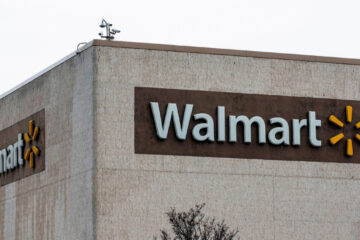Costco (COST) , the largest warehouse club in the U.S., has seen a surge in consumer demand over the past few months, despite its recent crackdown on membership card sharing and decision to hike membership prices last year.
In its latest earnings report, Costco revealed that its comparable sales in the U.S. increased by 8.3% year-over-year during the second quarter of fiscal year 2025. This contributed to it earning a net income of $1.7 billion, which is 2% higher than what it earned during the same quarter a year ago.
💵💰Don’t miss the move: Subscribe to TheStreet’s free daily newsletter 💰💵
The number of Costco’s paid household members also increased to 78.4 million, up 6.8% compared to last year.
Related: Costco quietly plans to offer a convenient service for customers
During an earnings call in March, Costco Chief Financial Officer Gary Millerchip warned that although customers are becoming more cautious about their spending amid recent economic concerns, sales during the quarter rapidly increased in multiple categories.
“For the quarter overall, gold and jewelry, gift cards, toys, housewares, appliances, sporting goods, home furnishings, and small electrics were all up double digits,” said Millerchip.
A woman shops for items at a Costco store.
Image source: Brown/AFP via Getty Images
Costco makes a harsh change
As more consumers flock to Costco stores, the warehouse club has further restricted purchases of a popular product amid a startling consumer trend.
Costco members looking to purchase gold bars online will now notice that they can only buy one bar per transaction. Before the change, members were able to purchase two at a time.
Also, Costco shoppers can now only purchase a maximum of two gold bar units per 24 hours. A year ago, members could buy at most five gold bars per day.
Costco’s gold bars have recently been in high demand, which may have prompted the recent change from the warehouse club. A survey from Bloomberg last year revealed that about 77% of Costco locations across 46 states sold out of gold bars within a week in October 2024.
Related: Costco makes controversial move to avoid high tariff costs
The additional limits on gold bar purchases generated mixed reactions from Costco members, who took to Reddit to share their thoughts on the change.
“Good, they should limit to 1. Screw the flippers and bots. It was getting near impossible to buy lately with the bots buying up all the inventory within a few minutes,” wrote one Reddit user.
“Hey I’m not a bot. I very much appreciated the 5 limit. 4 was okay. Going back to 2? Miserable. Especially since they won’t let you schedule delivery nor pick up at warehouse. So you have to PLAN to be home and you never know which day it will be,” wrote another Reddit user.
Costco’s new rules appear to respond to a growing trend
The move from Costco also comes as consumers across the country are opting to melt down their gold jewelry and sell it for cash as gold prices reach record highs.
The price of gold has jumped by about 25% over the past six months. Currently, one ounce of gold sells for around $3,250. The surge in gold prices can be attributed to economic uncertainty and fears surrounding President Donald Trump’s ever-changing tariff policy.
Tariffs are taxes companies pay to import goods from overseas, and they are often passed down to consumers through price increases.
More Retail:
Costco quietly plans to offer a convenient service for customersT-Mobile pulls the plug on generous offer, angering customersKellogg sounds alarm on unexpected shift in customer behavior
On April 2, Trump announced a 10% “baseline” tariff on all countries importing goods to the U.S., with roughly 60 countries seeing higher tariff rates, in an effort to wean the country off of its reliance on imported goods.
However, on April 9, Trump changed his mind and enforced a 90-day pause on reciprocal tariffs on all countries (except China), dropping them to a universal rate of 10%. He also unexpectedly hiked tariffs on China to 145%.
Earlier this week, Trump agreed to lower tariffs on China from 145% to 30% after recent negotiations. China will also drop retaliatory tariffs on U.S. goods from 125% to 10%.
According to a recent survey from market research company Numerator, 72% of consumers are worried that tariffs will raise prices for everyday goods, with 85% concerned about tariffs impacting their personal finances and shopping behaviors.
Related: Veteran fund manager unveils eye-popping S&P 500 forecast


